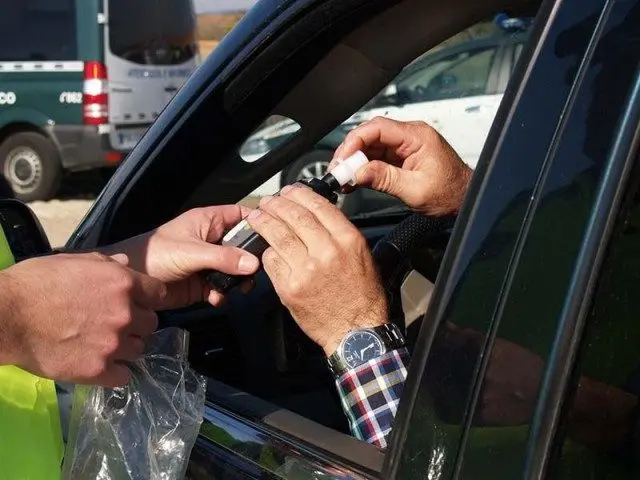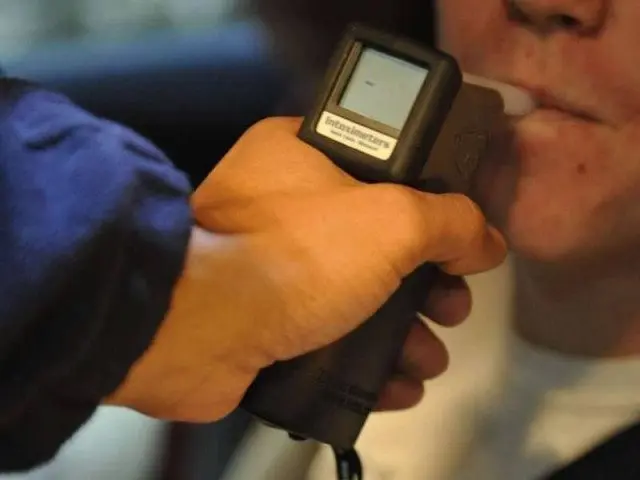
Как делают тестер алкоголя и можно ли его обмануть?
Праздники — это время года, когда вы пьете больше всего алкоголя. И одна из самых больших проблем — водители, которые смело садятся за руль в пьяном виде. Соответственно, существует реальная опасность, что они будут задержаны полицией и привлечены к ответственности за нарушение закона. Для этого они должны быть обвинены в вождении после употребления алкоголя, и это обычно делается с помощью тестера, доступного сотрудникам правоохранительных органов.
Чтобы избежать такого развития событий, самое главное — не садиться за руль в таком состоянии. В принципе, каждому водителю хорошо иметь свой тестер, с помощью которого можно проверять содержание алкоголя в крови (BAC) в крови и, если оно превышает допустимые нормы, соответственно выбирать другой способ передвижения.
Как работает тестер?
Первые устройства для проверки алкоголя были разработаны в начале 1940-х годов. Их цель — облегчить жизнь американской полиции, потому что внимание крови или мочи неудобно и не является конституционным. За прошедшие годы тестеры были многократно модернизированы, и теперь они определяют BAC, измеряя количество этанола в выдыхаемом воздухе.

Сам по себе этанол представляет собой небольшую водорастворимую молекулу, которая легко всасывается через ткань желудка в кровеносные сосуды. Поскольку это химическое вещество очень нестабильно, когда богатая алкоголем кровь проходит через капилляры в альвеолы легких, испарившийся этанол смешивается с другими газами. И когда человек дует в тестер, инфракрасный луч проходит через соответствующую пробу воздуха. В этом случае часть молекул этанола абсорбируется, и прибор рассчитывает концентрацию 100 миллиграммов этанола в воздухе. Используя коэффициент преобразования, устройство преобразует количество этанола в тот же объем крови и, таким образом, выдает результат тестеру.
Именно этот результат оказывается решающим, так как в некоторых странах признается судом доказательство степени алкогольного опьянения соответствующего водителя. В разных странах мира максимально допустимый уровень алкоголя в крови разный. Проблема, однако, в том, что тестеры на алкоголь, используемые полицией, неточны. Многочисленные исследования в лабораториях показывают, что у них может быть серьезное отклонение от нормы. Это может принести пользу испытуемому, но может и навредить ему еще больше, так как результат ненастоящий.
Если человек выпьет за 15 минут до сдачи теста, задержка алкоголя во рту приведет к увеличению BAC. Повышенный результат также наблюдается у людей с гастроэзофагеальной рефлюксной болезнью, поскольку аэрозольный спирт в желудке, который еще не попал в кровоток, может вызвать отрыжку. У диабетиков также есть проблема, потому что у них более высокий уровень ацетона в крови, который аэрозоли можно спутать с этанолом.
Можно ли обмануть тестера?
Несмотря на свидетельства ошибок тестеров, полиция продолжает полагаться на них. Вот почему люди ищут способы солгать им. За почти столетие использования было предложено несколько методов, некоторые из которых просто смешны.

Один из них — лизать или сосать медную монету, что должно «нейтрализовать» алкоголь во рту и, следовательно, снизить BAC. Однако в конце концов воздух попадает в устройство из легких, а не изо рта. Поэтому концентрация алкоголя во рту не влияет на результат. Не говоря уже о том, что даже если этот метод сработает, больше не будет монет с достаточным содержанием меди.
Следуя такой неправильной логике, некоторые люди считают, что употребление острой пищи или мяты (освежителя рта) замаскирует алкоголь в крови. К сожалению, это тоже никоим образом не помогает, и ирония в том, что их использование может даже повысить уровень BAC в крови, поскольку многие освежители для рта содержат алкоголь.
Многие думают, что курение сигарет тоже помогает. Однако это совсем не так и может только навредить. Когда горит сигарета, сахар, добавленный к табаку, образует химический ацетальдегид. Попав в легкие, он только еще больше повысит результат теста.
Однако есть способы обмануть тестировщика. Среди них гипервентиляция — учащенное и глубокое дыхание. Многочисленные испытания показали, что этот метод может снизить показатели содержания алкоголя в крови до такой степени, что это не наказуемо. Успех в этом случае связан с тем, что гипервентиляция очищает легкие от остаточного воздуха лучше, чем при нормальном дыхании. В то же время скорость обновления воздуха увеличивается, оставляя меньше времени для проникновения спирта.
Чтобы такое действие было успешным, необходимо сделать несколько вещей. После сильной гипервентиляции сделайте глубокий вдох в легкие, затем сильно выдохните и резко уменьшите объем. Прекратите подачу воздуха, как только услышите сигнал от устройства. Всегда будьте осторожны, чтобы не закончить воздух раньше.
Все тестеры требуют, чтобы вы непрерывно выдыхали в течение нескольких секунд перед выполнением анализа. Прибору нужен остаточный воздух из легких, и он выходит только на выдохе. Если поток воздуха меняется быстро, устройство будет быстрее реагировать при чтении, решая, что у вас заканчивается воздух в легких. Это может ввести экзаменатора в заблуждение, что вы все делаете правильно, но даже этот трюк не гарантирует полного успеха. Было показано, что он может снизить показания с минимальной промилле, т.е. он может спасти вас только в том случае, если вы находитесь на грани допустимого количества алкоголя в крови.
Не стоит садиться за руль пьяным
Единственный верный способ избежать наказания за вождение в нетрезвом виде — не пить перед тем, как сесть за руль. Даже если есть средство, с помощью которого тестировщика можно обмануть, это не избавит нас от отвлечения внимания и отсроченных реакций, которые возникают после употребления алкоголя. А это делает вас опасным на дороге — как для себя, так и для других участников дорожного движения.

